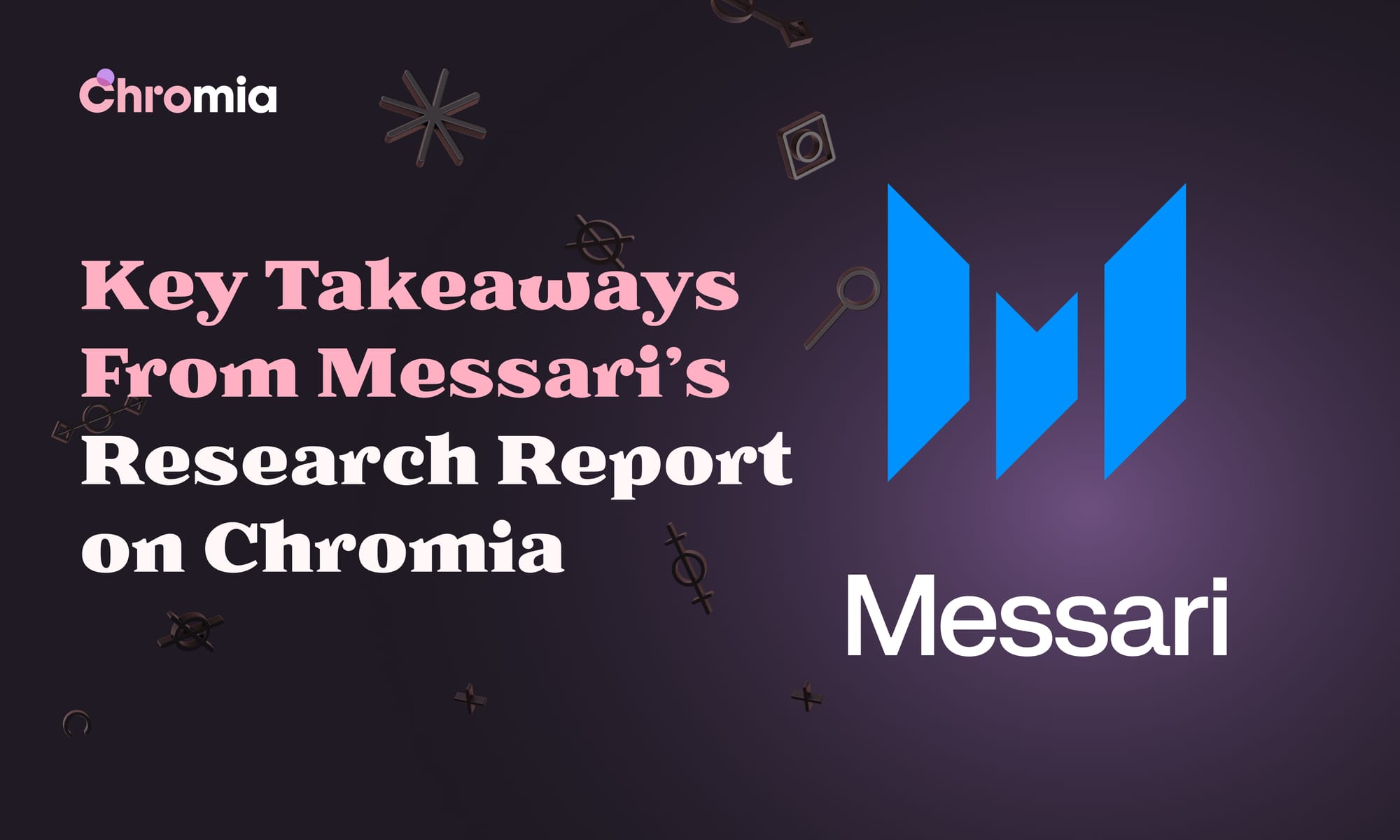On April 5th 2024, Messari published a report titled ‘Understanding Chromia: A Comprehensive Overview’. The report is full of information gathered by Messari’s team of independent researchers, and we encourage you to check it out! For those looking for the summary, let's delve into some key takeaways:
Celebrating Our Team’s Expertise
One of the highlights of the report is the acknowledgment of our founders’ important contributions to the world of blockchain. From pioneering early blockchain wallets to co-creating Colored Coins and advancing proof-of-stake consensus mechanisms, Alex, Or and Henrik have a track record of innovation and success. This recognition from Messari highlights our team's
dedication and expertise, which is now being used to establish Chromia as a key player in the crypto landscape.
Expanding Our Reach
The report also sheds light on our strategic expansion efforts, mentioning the addition of Yeou Jie Goh as our Head of APAC. This appointment underscores our commitment to broadening our geographic reach and tapping into emerging markets. Our participation in events like the Hong Kong Web3 Festival alongside Animoca Brands underscores our proactive approach to establishing Chromia as a global presence in Web3.
Illustrating Chromia’s Modular Framework
The article featured an updated version of a graphic from the whitepaper, providing a visual representation of Chromia Network’s architecture. The diagram highlights our modular framework that gives dapps their own chains and clusters for scalability and customization while carrying out critical system functions on specialized chains.
The new illustration also effectively communicates EVM asset-bridging capability, as well as the ability to enhance security by logging anchoring checkpoints on Ethereum. The report also outlines the ICCF, and ICMF protocols, which facilitate seamless cross-dapp and cross-chan transfers, allowing the various parts of the Network to work together to form a cohesive whole.
Focus on Data-Intensive Applications
Chromia's relational blockchain architecture stands out in the competitive Layer-1 market, excelling in data-intensive applications like gaming, AI, and indexing. Messari's report validates this strength, highlighting our efficient handling of complex data. Powered by Rell, Postchain, and a relational approach, our focus on on-chain querying positions Chromia as a uniquely powerful solution for building computationally intensive dapps. As we approach mainnet launch and beyond, these advantages become even more crucial for developers seeking to overcome the limitations of traditional blockchains.
Chromia’s Growing Ecosystem
Messari made a point to highlight several ecosystem projects and partners, including My Neighbor Alice, Chain of Alliance, Fanzeal, VfB Stuttgart, and RSTLSS. While our current priority is completing and delivering mainnet, it is important to remember that there is also a vibrant collection of projects who will be leveraging Chromia’s technology. The report's spotlight on both live and upcoming applications, as well as our growing provider network, showcases the health of our ecosystem.
Chromia’s Growth Potential
The analysis compares Chromia to both Beam and ImmutableX, pointing out that our market cap of ~375m has room to grow compared to Beam at 1.7b (4.5x) and ImmutableX at 3.8b (9.87x).
We also believe Chromia has room to grow. In 2024, we will deliver mainnet, raise awareness across the cryptoverse, and expand our ecosystem of projects and partners to fulfill our full potential as an innovative Layer-1.
You can view the full report here.
About Chromia
Chromia is a Layer-1 relational blockchain platform that uses a modular framework to empower users and developers with dedicated dapp chains, customizable fee structures, and enhanced digital assets. By fundamentally changing how information is structured on the blockchain, Chromia provides natively queryable data indexed in real-time, challenging the status quo to deliver innovations that will streamline the end-user experience and facilitate new Web3 business models.
Website | Twitter | Telegram | Facebook | Instagram | Youtube | Discord
